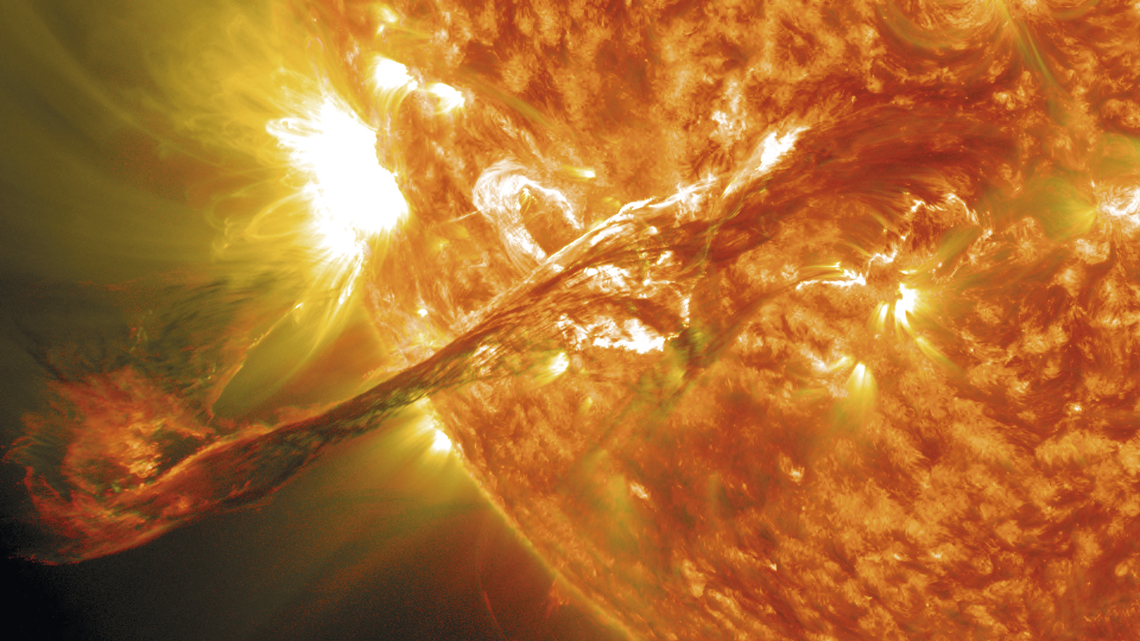Three satellites are helping to shed light on an almost 80-year-old astronomy conundrum: Why is the Sun’s corona, the outermost layer of its atmosphere, so much hotter than its surface? While the temperature of the corona is close to 2 million degrees Celsius (°C), the Sun’s surface does not exceed 5,500 °C. The most likely cause is magnetic reconnection, a physical phenomenon that occurs more frequently and on a smaller scale in the corona, according to an international group of scientists led by Xin Cheng of Nanjing University, China. In magnetic reconnection, the lines of a magnetic field rearrange themselves, releasing magnetic energy. During this process, some of the magnetic field’s energy is transformed into heat and transferred to the particles in the solar corona. It was already known that magnetic reconnection occurs sporadically on a large scale in the Sun, triggering powerful explosions that launch particles into space. The newly analyzed data showed that the phenomenon can also occur more gently, in much smaller areas, and for longer periods. Images captured by the Solar Orbiter satellite on March 3, 2022, identified a sequence of gentle reconnections that lasted almost an hour, followed by some explosions. During these reconnections, the temperature in some regions of the corona reached 10 million °C and propagated in the form of small bubbles at a speed of 80 kilometers per second (Nature Communications, April 13).
RepublishAstronomy
Origin of the high temperature of the solar corona

In the Sun’s corona, lines of magnetic fields rearrange themselves, generating a powerful heating effect
Nasa Goddard Space Flight Center / Wikimedia Commons